
Hippolytus and Phaedra
Nearly 2,000 years after its destruction, Pompeii continues to surprise archeologists. The ancient port city, covered in ash during the Mount Vesuvius eruption of 79 CE, is filled with clues about life in ancient Rome. From bakeries and snack bars to richly painted houses, these glimpses into the past are critical to our understanding of history. Now, another dwelling with well-preserved paintings has been discovered during excavations of the Insula of the Casa dei Casti Amanti in the central part of the city.
Pompeii is known for its large, luxurious residences with open atriums, but this “tiny home” shows a shift in Roman architecture. While the quality of its frescos matches that of larger homes, it lacks this atrium, even if there was space for it. This change is something that is currently being investigated by scholars who equate the shift to modern changes in domestic life.
“Today, the ‘open kitchen,’ which in the post-war period would have seemed an unacceptable fall from grace for a ‘good family,’ is completely normal; indeed, it expresses a way, not only of organizing the living space but of being together,” they write in Pompeii’s online academic journal. “Today, we don’t just meet to ‘eat together;’ we also socialize by cooking together.”
The House of Phaedra would already be intriguing for this fresco, but that’s just one of many in the home, whose walls are decorated in Pompeii’s intricate Fourth Style. Other scenes include a frolic between a nymph and a satyr, a divine couple that may be Adonis and Venus, and a damaged artwork that appears to be The Judgement of Paris.
Animal motifs also run throughout the home, including a depiction of a bird of prey holding a palm branch in its claws. In addition to the artwork, a niche filled with ritual objects has given researchers interesting insights into life in Pompeii. After laboratory analysis of an incense burner and lamp, they identified twigs of aromatic plants and dried figs left behind on the objects.
These incredible findings only highlight how many treasures Pompeii has yet to give us. As work continues in the House of Phaedra and the surrounding homes, there is certainly more to come.
Archeologists are astounded by a small, richly decorated home recently uncovered in Pompeii.

Satyr and nymph
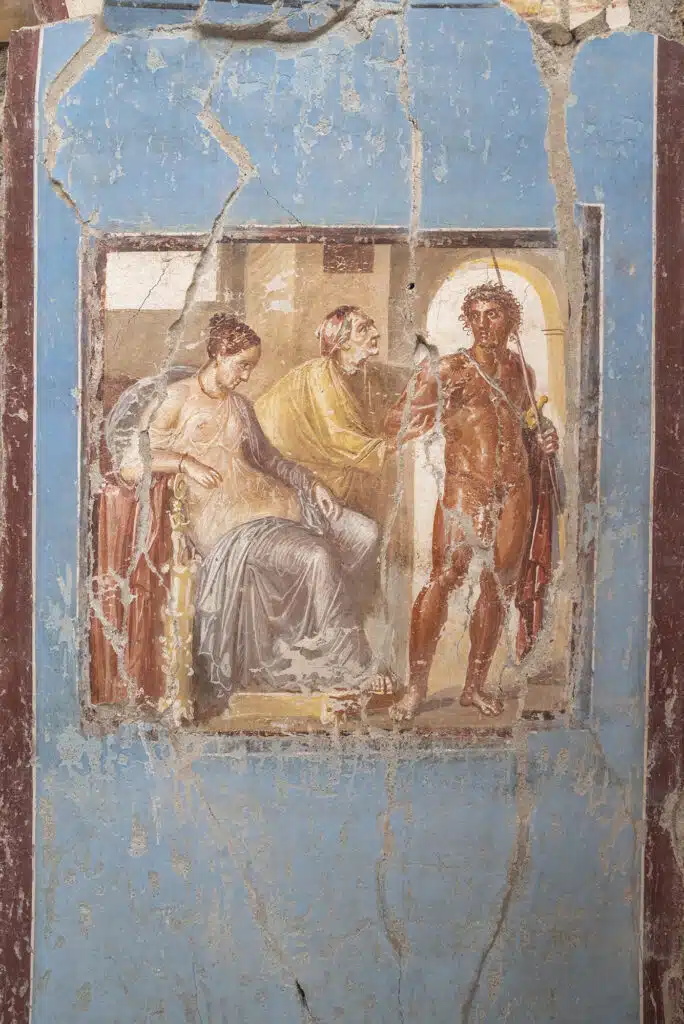
Named the House of Phaedra, it is filled with well-preserved frescoes and shows a shift in architectural styles.
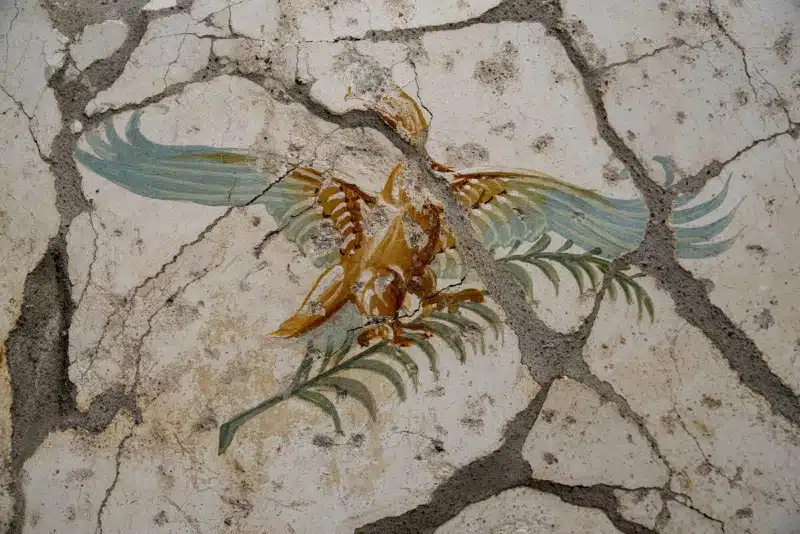
Bird of Prey
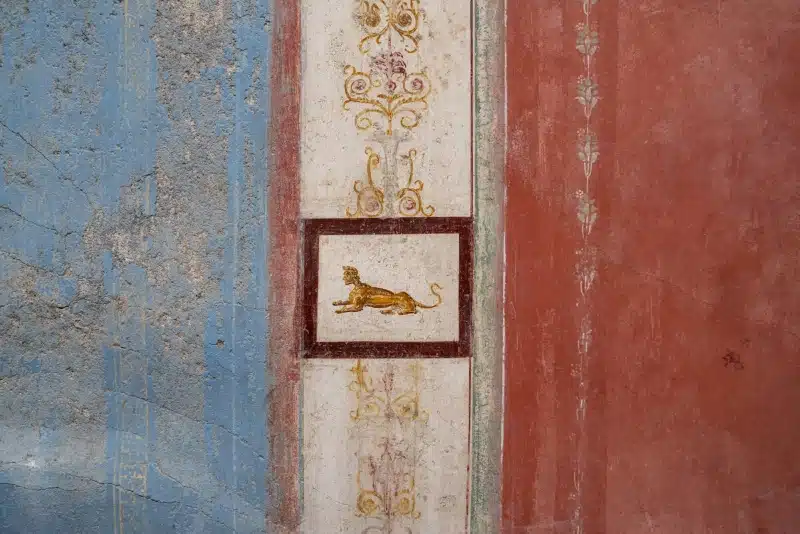
Sphynx
Among the findings is also a small household shrine with ritual objects.
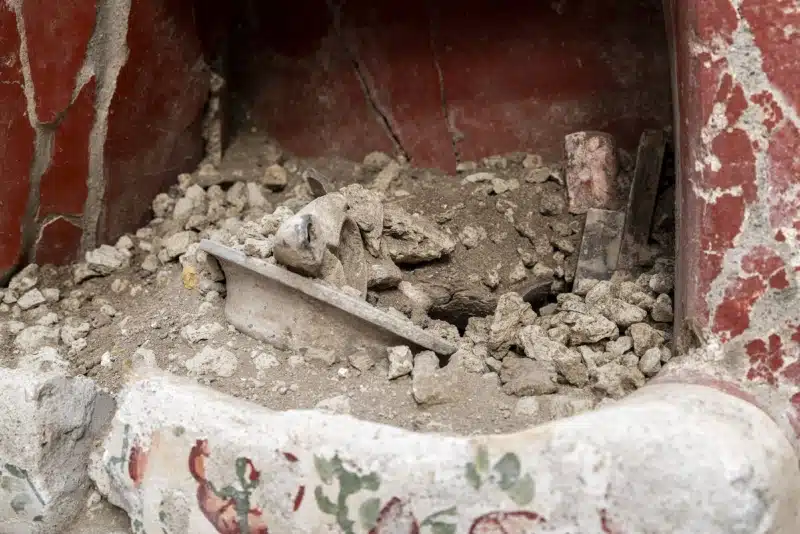
Incense burner inside household shrine

These discoveries will continue to unfold as the archeological park excavates the Insula of the Casa dei Casti Amanti in the central part of the city.
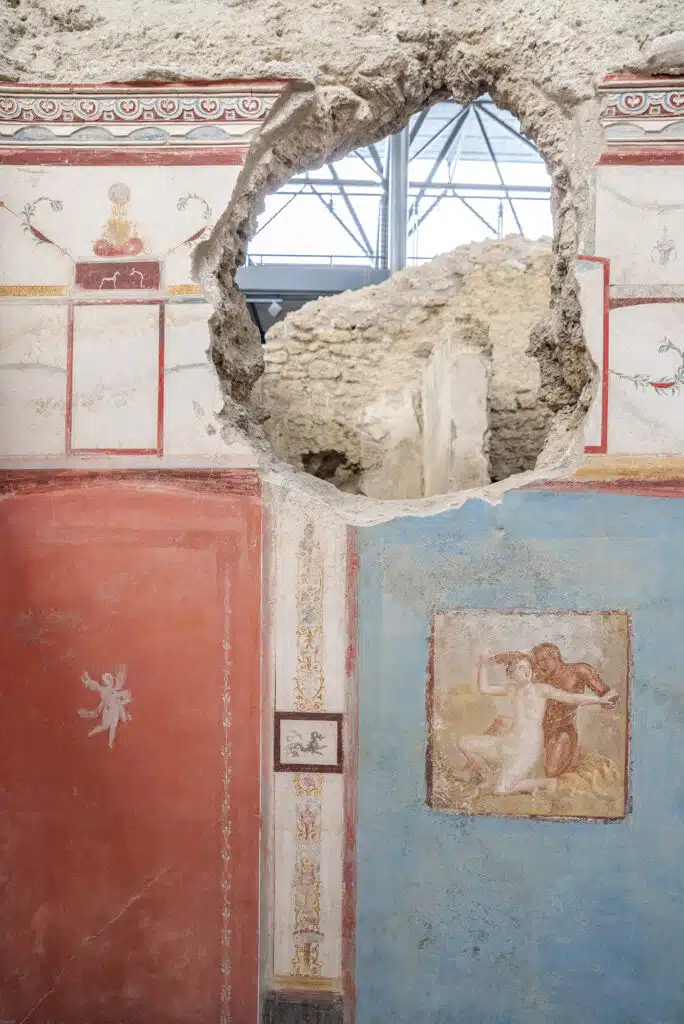
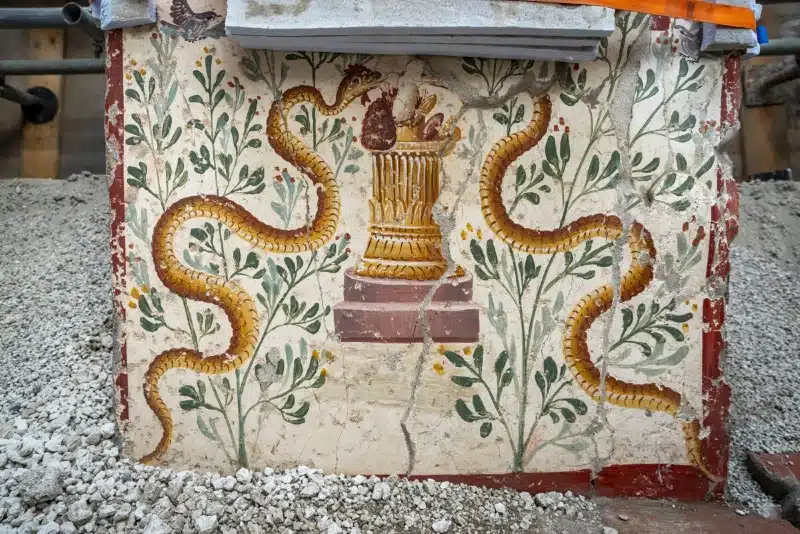
Source: POMPEII: WHEN GREAT ART ALSO BEGAN TO APPEAR IN SMALL HOUSES
Related Articles:
Watch the Final Hours of the Once-Vibrant City of Pompeii
Archeologists Discover ”Pizza” in an Ancient Pompeii Mural
1,900-Year-Old Ceremonial Chariot Has Been Discovered Near Pompeii
Scientists Successfully Sequence the DNA of Man From the Pompeii Eruption for the First Time
